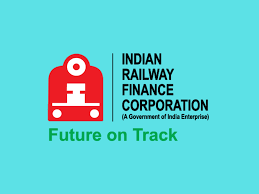Indian Railway Finance Corporation (IRFC) is a government-backed entity that primarily finances the acquisition of rolling stock, leasing of railway infrastructure assets, national projects of the Government of India, and lending to other entities under the Ministry of Railways. IRFC’s shares have been in the news recently due to their surge in price. In this article, we will take a comprehensive look at IRFC’s share price, the factors affecting it, recent developments, and the risks and benefits of investing in IRFC’s stock.
IRFC Share Price and Increase As of September 5, 2023, the share price of IRFC is ₹55.75. However, on September 4, 2023, the share price of IRFC surged by 20% to hit its fresh 52-week high of Rs 66.78. On September 5, 2023, the shares of IRFC were trading with gains of close to 19%. This surge in share price could attract more investors and positively impact the company’s market capitalization.

Factors Affecting IRFC Share Price Several factors can affect the share price of IRFC, including:
- Government policies: As a government-backed entity, IRFC’s operations and funding are closely linked to government policies.
- Financial performance: The financial performance of IRFC, such as its earnings per share (EPS), net profit, and revenue, can impact its share price.
- Interest rates: The interest rate environment can affect IRFC’s cost of borrowing, which can impact its profitability and share price.
- Market sentiment: Market sentiment, influenced by news, rumors, and investor sentiment, can also impact IRFC’s share price.
- Dividend payouts: The dividend payout of IRFC can also impact its share price.
- Technical factors: Technical factors such as resistance and support levels, moving averages, and trading volumes can also impact IRFC’s share price.
Recent Developments in IRFC
Several recent developments in IRFC could impact its share price, including:
- Record high share price: IRFC’s share price surged by 20% on September 4, 2023, to hit its fresh 52-week high of Rs 66.78. This surge in share price could attract more investors and positively impact the company’s market capitalization.
- Positive outlook: According to Ravi Singh, the view of IRFC is positive due to the robust growth in sales despite rising finance costs. This positive outlook could attract more investors and positively impact the company’s share price.
- Overvaluation concerns: IRFC’s PE ratio of 9.51 indicates that it is overvalued compared to the sector, which has a PE ratio 6.41. This overvaluation could lead to a correction in the share price.
- Market capitalization: IRFC’s market capitalization has crossed Rs 80,000 crore due to a sharp rise in its stock price. This increase in market capitalization could attract more investors and positively impact the company’s share price.

Risks and Benefits of Investing in IRFC’s
Stock Investing in IRFC’s stock carries some risk, as with any investment. Here are some of the risks associated with investing in IRFC’s stock:
- Market fluctuations: IRFC’s stock price can be impacted by market fluctuations, which can be caused by various factors such as economic conditions, political events, and global events.
- Economic conditions: IRFC’s financial performance is closely linked to the country’s economic needs. Any adverse economic conditions, such as a recession or inflation, can impact the company’s profitability and share price.
- Overvaluation concerns: IRFC’s PE ratio of 9.51 indicates that it is overvalued compared to the sector, which has a PE ratio 6.41. This overvaluation could lead to a correction in the share price.
- Liquidity risk: Any mismatch in the tenor of IRFC’s leases and borrowings may lead to reinvestment and liquidity risk, adversely impacting the company’s financial performance.
- Investment risk: There is always a risk associated with any investment, and IRFC’s stock is no exception. Investors should carefully research their investment goals and risk tolerance before investing in IRFC’s stock.
However, IRFC is generally considered a low-risk investment due to the following factors:
- Low-risk business model: IRFC’s primary business objective is to finance the acquisition of rolling stock, leasing of railway infrastructure assets, and national projects of the Government of India. This low-risk business model makes it an attractive investment option for retail investors.
- Cheap valuation: IRFC’s valuation is attractive compared to other NBFCs with sound fundamentals and strong asset quality. Considering the total equity after the IPO, IRFC demands a price-book (P/B) multiple of one, which is lower than other similar companies.
- Fundamental strength: IRFC’s financial performance is indicative of its actual power. Its financial performance, such as earnings per share (EPS), net profit, and revenue, is sound and can be a good investment option.
- Facilitating priority capex: IRFC is critical in promoting priority capex for the national carrier. It makes IRFC an essential entity for the Indian Railways, a government-owned entity that reduces the risk of investment in IRFC.
Risks Associated with Investing in IRFC’s Stock:
– Investing in IRFC’s stock is subject to market risks, and investors should know the potential for losses.
– High-risk investments often have little probability of paying off, and investors may pay a price to learn their lesson.
What Makes IRFC a Low-Risk Investment Option for Retail Investors:
– IRFC is a low-risk business model due to its agreement with the Ministry of Railways.
– The company follows an active asset and liability management strategy, which helps to mitigate risks.
– IRFC’s gradual growth and consistent profits make it a low-risk investment option for retail investors.
IRFC’s share price has risen due to the current market conditions and the company’s financial performance. While investing in IRFC’s stock is subject to market risks, the company’s low-risk business model and active asset and liability management strategy make it an excellent long-term investment option for retail investors. However, investors should know the potential for losses and the risks associated with high-risk investments.
Conclusion
IRFC’s share price has been in the news recently due to its surge in price. While IRFC is generally considered a low-risk investment, all investments carry some risk. Investors should conduct their research and seek professional advice before making investment decisions. The factors affecting IRFC’s share price include government policies, financial performance, interest rates, market sentiment, dividend payouts, and technical aspects. Recent developments in IRFC that could impact its share price include its record high share price, positive outlook, overvaluation concerns, and market capitalization.
